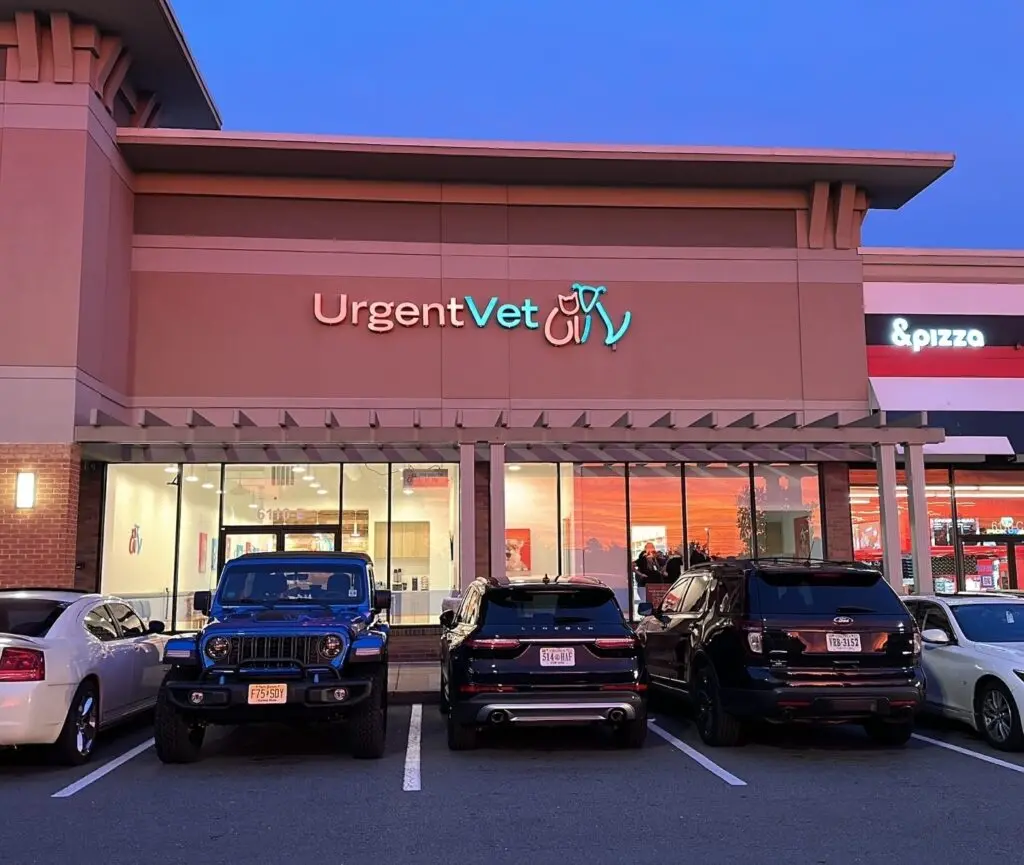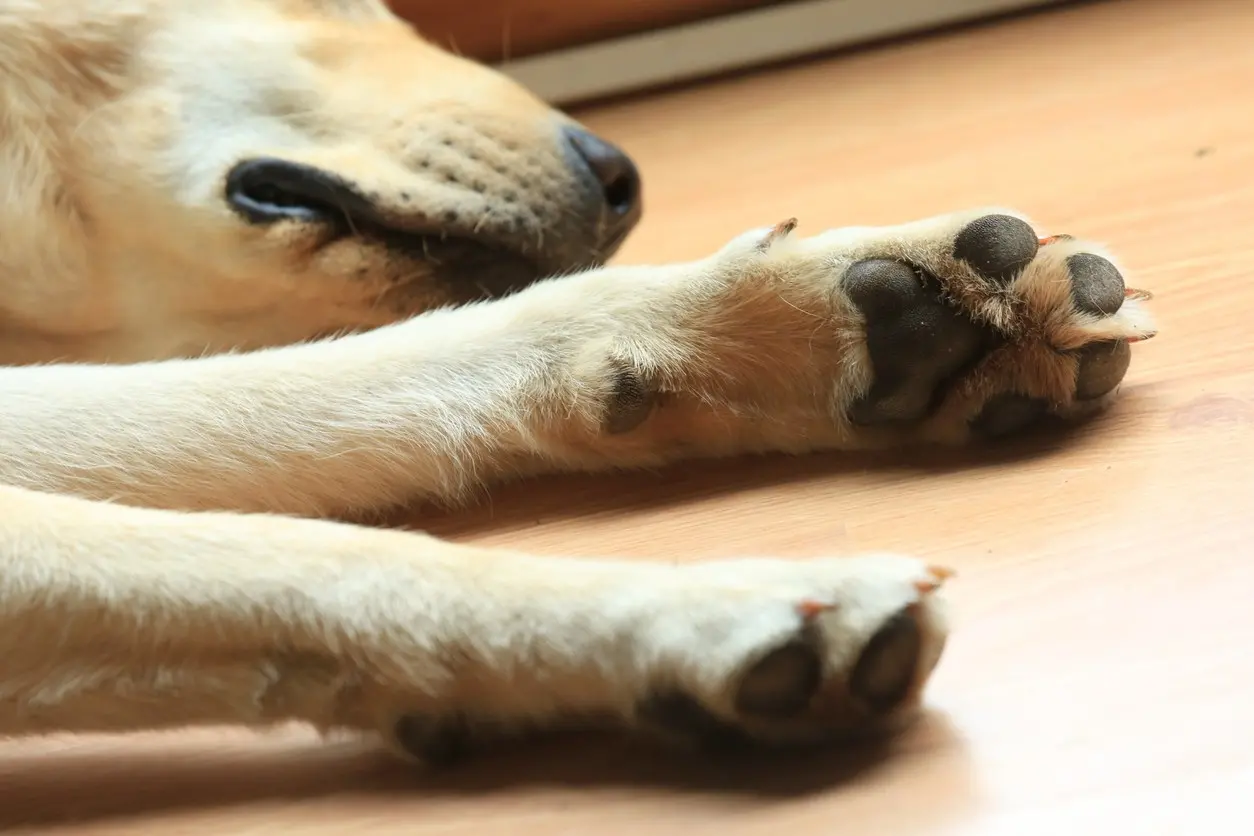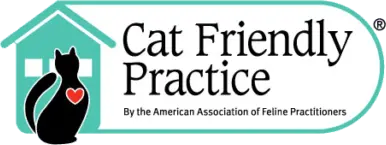What to “Dew” if Your Dog Breaks a Dewclaw
One minute your dog is running and playing and the next, they’re holding up a blood-tinged paw. Your heart leaps into your throat. What happened? If your dog is like many others, they may have broken or torn their dewclaw. If your dog exhibits this visibly alarming sign, bring them to your nearest UrgentVet location, and we will treat this relatively minor injury, stopping the bleeding and easing your pooch’s pain.
Dewclaws in dogs explained
Dewclaws are the innermost digits on your dog’s forelimbs and sometimes hind limbs. Forelimb dewclaws are attached by bone and ligament, forming a true digit, similar to the other four toes. However, hind limb dewclaws are typically considered vestigial (i.e., nonfunctional) digits, and only skin attaches them to the foot. Although these digits are not in direct contact with the ground while your pooch stands or walks, the forelimb dewclaws support natural movement when a dog runs and extends their carpus.
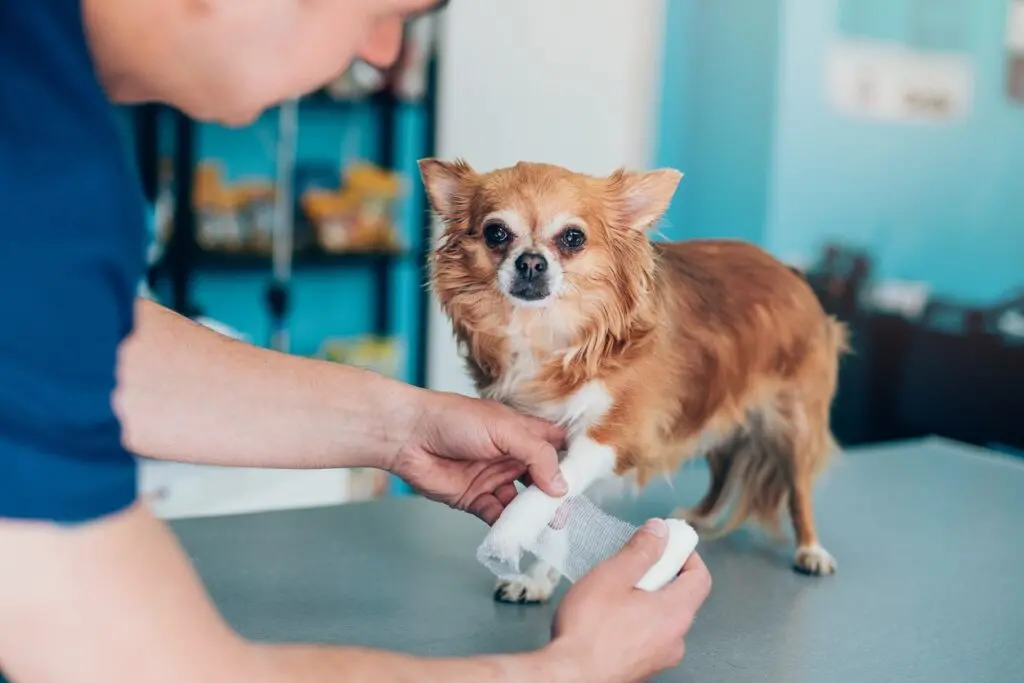
Dewclaw injuries in dogs
Although dewclaws are attached to the limb by skin, or bone and tendon, their location and inconsistent ground contact predisposes them to nail overgrowth and injury. During rough play or physical activity, these long, overgrown, and sometimes misshapen nails may be snagged, pulled, or broken.
A dewclaw injury is more severe than a hangnail. Because of their tissue attachment and blood supply, these injuries require veterinary treatment to reduce pain and prevent infection. In some instances, the entire toe may be broken or dislocated, requiring a more extensive treatment plan or total toe removal.
Dewclaw injury signs in dogs
Many dewclaw injuries present with disturbing signs, but others may be more subtle. Dewclaw injury signs include:
Bleeding toenail
Limping
Swollen or misshapen digit
Cracked nail
Frequent licking or chewing on or around the dewclaw
Persistent infections that don’t improve with treatment
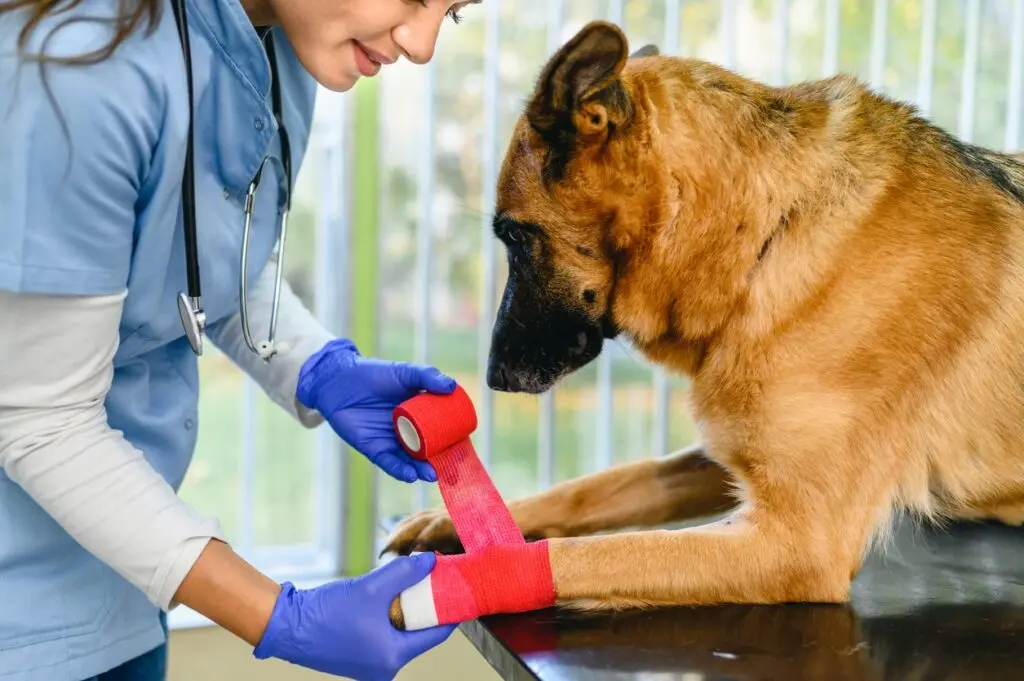
What to do if your dog has torn their dewclaw
A dewclaw injury is not an emergency, but your dog should receive timely care. Contact your primary veterinarian if your dog’s dewclaw has been injured or torn when their office is open. If your pooch’s injury occurs after your primary veterinarian has closed for the evening or weekend, check in at the UrgentVet location near you for convenient and compassionate care.
If your dog’s dewclaw is bleeding, lightly wrap their limb with a gauze pad and flexible bandage wrap, but avoid tightening the bandage because it can impede circulation to the foot. Do not give your dog any pain medication unless your primary veterinarian instructs you to do so. If you don’t have bandage materials available, keep your dog calm and confined until you can bring them to our facility. In addition, stay calm because your anxiety can be contagious to your pooch, and their increased stress will raise their blood pressure, which can worsen bleeding and pain.
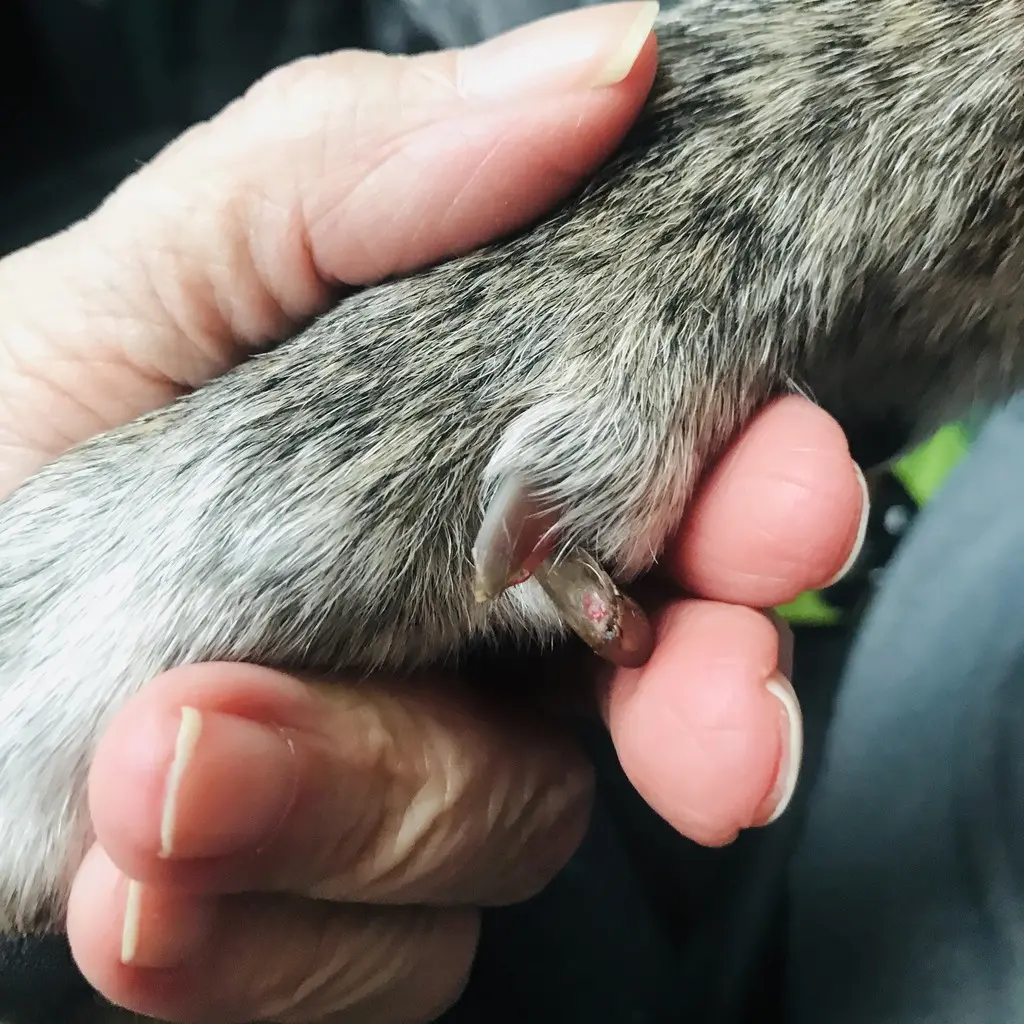
Dewclaw injury treatment for dogs
Broken dewclaw treatment generally includes trimming the damaged area, which may be a portion of or the entire nail. Our UrgentVet team may administer a local anesthetic to numb the digit’s nerves to prevent additional pain. After our team has removed the damaged nail, we will likely bandage your dog’s paw, which you should keep covered for several days to promote healing. Ensure the bandage stays clean and dry until your pooch’s scheduled recheck appointment, and prevent your dog from licking or chewing the area. Some dogs may require an Elizabethan collar (i.e., cone) to prevent them from reaching their bandaged paw. Our team may also prescribe antibiotics and anti-inflammatory medication to prevent infection and keep your dog comfortable. As long as the nail’s blood supply (i.e., quick) hasn’t been injured, the dewclaw will regrow within 2 to 3 months.
Complex dewclaw injuries, including tumors, dislocation, fracture, and recurring injuries or infections, may require more extensive surgery, and your pooch will have to receive anesthesia to undergo such a procedure. In many cases, dewclaw amputation (i.e., removal) is the treatment of choice.
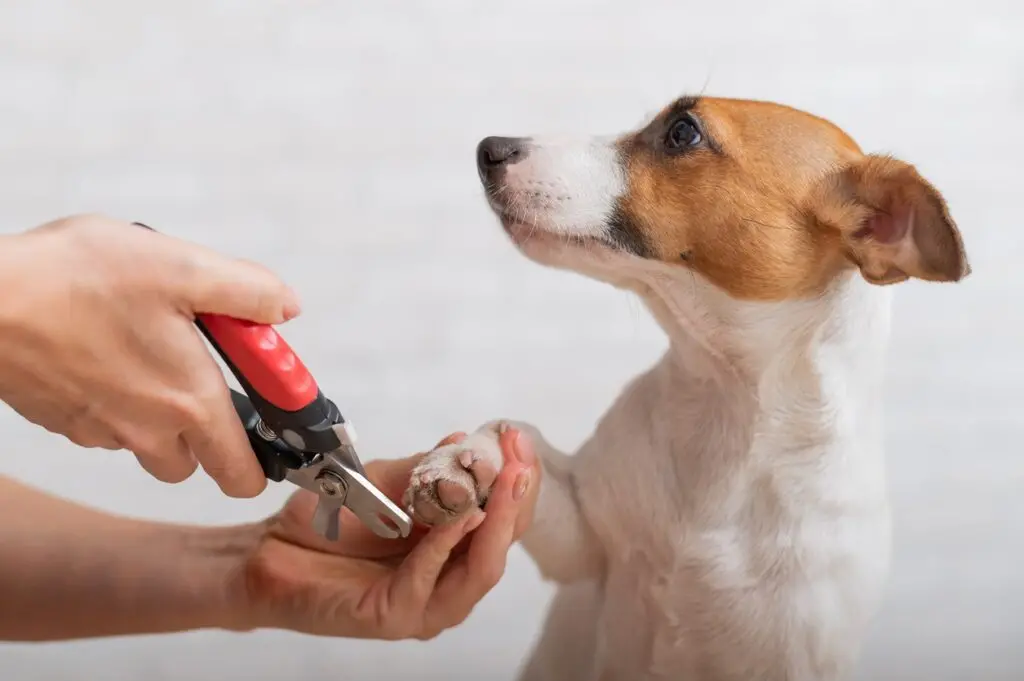
How to prevent dewclaw injuries in dogs
Overgrown nails are the primary cause for most dewclaw-related injuries. Therefore, routine nail maintenance is the best way to help your dog avoid a broken or torn dewclaw’s pain and discomfort. Plan to trim or grind your dog’s dewclaws at least twice monthly. If you’re uncomfortable trimming your dog’s nails, ask your groomer or primary care veterinary team for tips and guidance. Many pet professionals can help you devise an approach that works for you and your dog, or may perform the service for a small fee.
If your dog experiences a broken or torn dewclaw, their injury signs can be alarming, especially if they occur when your primary veterinarian’s facility is closed for the evening or weekend. And because your pet can’t wait to feel better, our UrgentVet team provides evening, overnight, weekend, and holiday care for all non-life-threatening pet accidents, injuries, and emergencies. Find the UrgentVet location nearest you, view current wait times, and check-in online for convenient, knowledgeable, and compassionate veterinary care.
